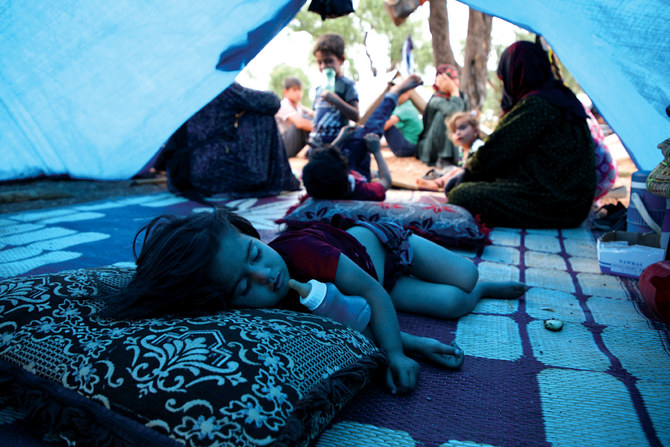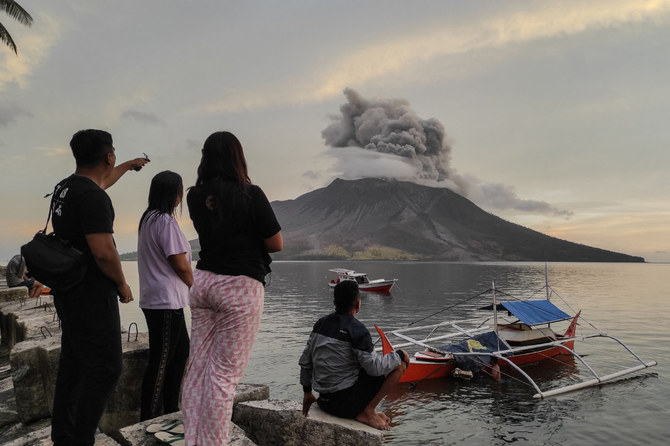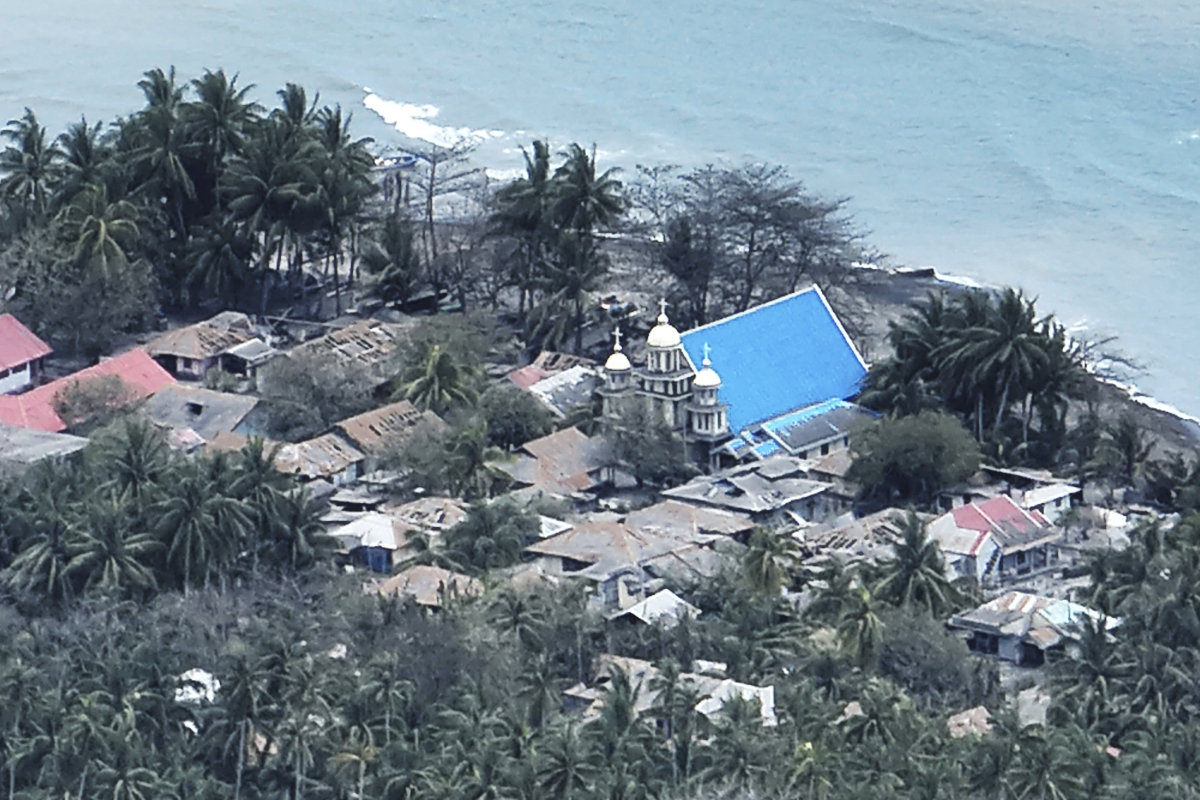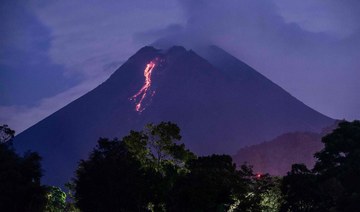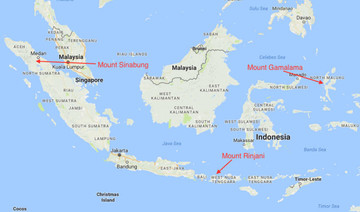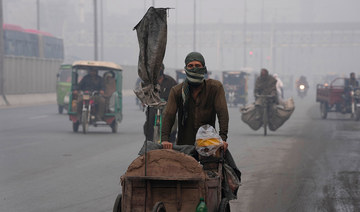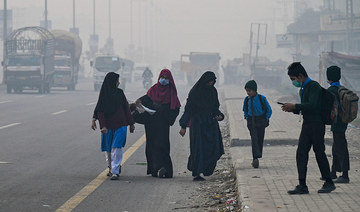ABU DHABI: The year leading up to June 20, World Refugee Day, has been marked mostly by negative long-term trends, according to the latest annual Global Trends report of the UN High Commissioner for Refugees (UNHCR).
The year saw an increase in the number of displaced people and the emergence of new refugee crises, of which Venezuela was the largest and most alarming.
Almost 70.8 million people are currently experiencing forced displacement worldwide, according to the report, double the level 20 years ago and 2.3 million more than a year ago. The UNHCR says the figure of 70.8 million is conservative.
IN NUMBERS
70.8 MILLION • People experiencing forced displacement worldwide.
41.3 MILLION • People recorded as internally displaced as of December 2018.
20.4 MILLION • Refugees under the UNHCR’s mandate as of December 2018.
13.6 MILLION • People newly displaced worldwide in 2018
13 MILLION • Size of forcibly displaced population of Syrians
UN Secretary-General Antonio Guterres, who came to the job after helming the UNHCR for 10 years, has appealed for greater global solidarity to confront the mounting crisis.
According to Global Trends data, by the end of 2018 the number of refugees under the UNHCR’s mandate had reached 20.4 million, nearly double the figure in 2012. Some 13.6 million people were newly displaced due to conflict or persecution in 2018.
At 1,560,800, Ethiopians made up the largest newly displaced population, 98 percent of them within their country. Meanwhile, some 4 million Venezuelans have left their country since 2015.
The unchanging trend of 2018 has been refugees’ country of origin, with 67 percent of them from Syria, Afghanistan, South Sudan, Myanmar and Somalia. At the end of 2018, Syrians continued to be the largest forcibly displaced population, with 13 million people displaced.
“What we are seeing in these figures is further confirmation of a longer-term rising trend in the number of people needing safety from war, conflict and persecution,” said Filippo Grandi, the UN high commissioner for refugees.
International days such as World Refugee Day are occasions to educate people on issues of concern, mobilize political will and resources to address global challenges and, in the UN’s words, “to celebrate and reinforce achievements of humanity.”
The existence of international days predates the creation of the UN, but its agencies have increasingly adopted the concept as an advocacy tool.
Accordingly, World Refugee Day honors refugees’ strength and courage, encourages support for them, and strives to raise public awareness of their situation. This year, the focus is on the personal and the local, with individual stories being used by the UNHCR to put a human face to refugee numbers and statistics. To this end, the UNHCR has organized a number of events in Gulf countries that are open to the public.

Children in a makeshift refugee camp in the Democratic Republic of Congo. (AFP)
In Kuwait, a film on refugees will be screened in addition to a photo exhibition on the same topic.
Also, a partnership between the UNHCR and Al-Hamra Business Tower and Luxury Center will see the facade of Kuwait’s highest skyscraper turn blue in solidarity with refugees.
In Saudi Arabia, the UNHCR and the King Salman Humanitarian Aid and Relief Center (KSRelief) are organizing special events on the weekends of June 21-22 and 28-29 at Riyadh Park Mall and Jeddah’s Read Sea Mall.
Besides a photo exhibition and a display of UNHCR tent and relief items, there will be a booth where people can register online to offer their support for refugees.
In the UAE, the UNHCR is organizing a full-day event to mark World Refugee Day on the campus of New York University Abu Dhabi, featuring a 12-hour indoor relay race in support of the #StepWithRefugees campaign.
The target is to reach 409 km in honor of Eva, a 9-year-old refugee who covered that distance in 12 days while fleeing from South Sudan to Ethiopia. Additionally, the documentaries “Desperate Journeys” and “4.1 Miles” will be screened.
The UNHCR’s website is also carrying stories of hope and inspiration, highlighting the positive impact that individuals and organizations can make on the lives of refugees. A case in point is a football camp being conducted in Uganda by coaches from the Italian football club Sampdoria. Youths from refugee and host communities are taking part in the three-day training program.
Coaches Marco Bracco and Roberto Morosini said they want to offer hope and show their solidarity with young football lovers.
“Refugees face a lot of problems, so maybe for three days they can focus only on football,” Bracco said. “It was our little dream, and now we are here and we are very happy.”
One of the program’s participants is 14-year-old Patrick Amba, whose family fled South Sudan three years ago. They walked for days until they found safety across the border in Uganda, which hosts more than 1 million refugees, most of them from South Sudan. “When I play football, I am happy,” said Amba. “I feel like I am an important member of the community, and I can share my ideas.”
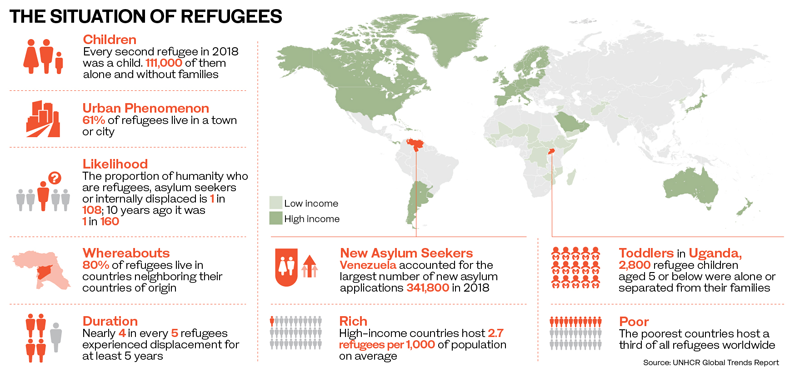
Another account is of the kindness many Venezuelans fleeing their country have experienced in neighboring Colombia.
Among the 1.3 million Venezuelans who have found safety across the border are 140,000 who arrived in 2018 in Riohacha, a small city in a strained and impoverished region where they struggle to find shelter and food. Grandpa’s House, a care center that used to host seniors who had been left alone, has increased its capacity in response to the influx.
The UNHCR report describes the effect of the Venezuelans’ arrival on 75-year-old Morato Martinez, a Colombian who spends his days painting the walls of Grandpa’s House. One of his latest murals depicts a couple of grandparents holding hands. It reads: “Grandparents are people full of love.”
Martinez said: “This painting had only an abstract meaning until we met the families from Venezuela. Now it has a real meaning.”
The uplifting accounts from Uganda and Colombia form the backdrop to Grandi’s observation that “while language around refugees and migrants is often divisive, we are also witnessing an outpouring of generosity and solidarity, especially by communities who are themselves hosting large numbers of refugees.”
In fact, despite the negative trends, the global refugee situation in 2018 saw some positive developments, including enhancement of regional response plans.
For instance, as a follow-up to the 2016 New York Declaration for Refugees and Migrants, the Global Compact on Refugees (GCR) was formally adopted at the UN General Assembly on Dec. 17, 2018.
The comprehensive approach to specific refugee situations, as highlighted by the GCR, emphasizes the importance of national and regional arrangements.
The recommended responses include galvanizing political commitment, facilitating sustained engagement of development actors in support of host communities, and supporting comprehensive policy initiatives that seek to ease pressure on host countries and encourage self-reliance.
As Grandi said, in an effort to counter superficial narratives being used by populist politicians to foster opposition to refugees, “we must build on positive examples and redouble our solidarity with the many thousands of innocent people who are forced to flee their homes each day.”






